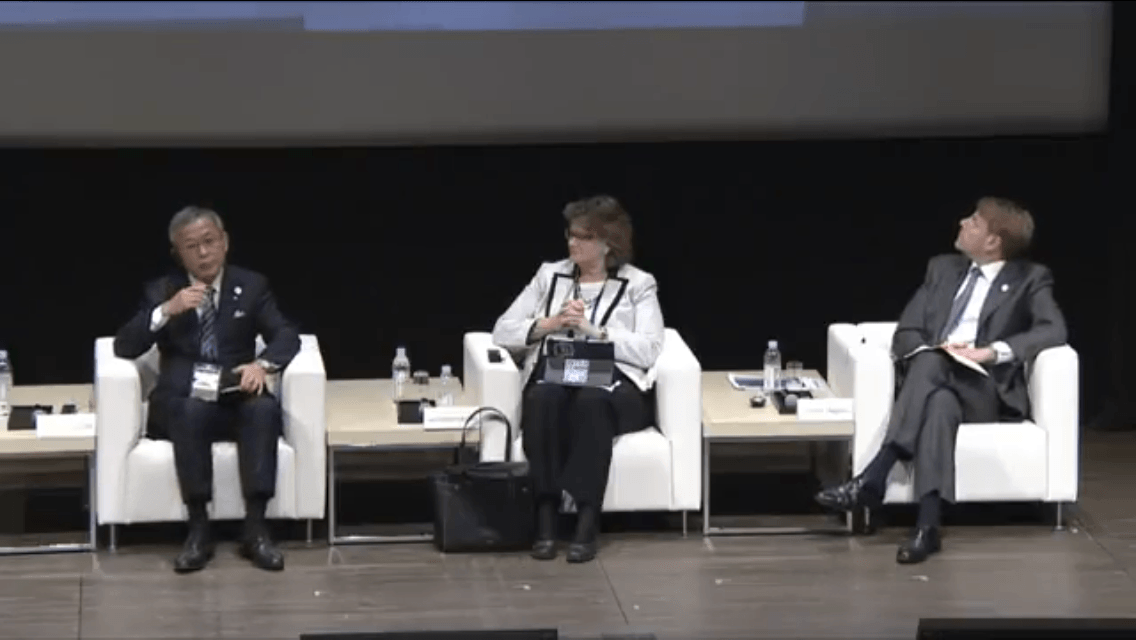On April 30, 2016, ICT Ministers of the “G7 group” concluded their deliberations in the beautiful city of Takamatsu, Kagawa prefecture in Japan. After months of preparatory work and two full days of discussions, the ICT Ministers of the USA, UK, France, Italy, Japan, Canada and Germany plus the European Union issued a joint declaration that:
- recognizes our digitally connected world,
- commits to mutual goals and, once again,
- reaffirms the multistakeholder model for the governance issues facing the deployment, development and evolution of the global Internet.
The meeting itself and the accompanying documents are important for two main reasons. First, this has been the first ICT Ministerial meeting the G7 group has held in almost 20 years. Second, the organization of this meeting was led and carried by the government of Japan.
I spent a week in Japan talking to dedicated and engaged stakeholders and participating in the ICT Multistakeholder conference. As I wrote last week, there is great work being done in Japan. What is more important is that this work is happening under a very clear understanding that no single stakeholder alone can resolve the complex Internet-related issues. The government of Japan is a champion of the multistakeholder governance model and is promoting it successfully.
In the declaration, the ICT Ministers acknowledge and welcome both the Outcome Document of the High Level Meeting of the United Nations General Assembly on the overall review of the implementation of the outcome of the World Summit on the Information Society (WSIS) as well as the Internet Governance Principles of the NETmundial Multistakeholder Statement. Both of these international documents accept the normative application of the multistakeholder model for Internet governance.
The fact that these documents are cited in the declaration confirms the view I shared with the Ministers and other participants in Takamatsu that the “debate [over whether the multistakeholder model is the appropriate one for the Internet] is settled and that it is now more useful to focus on the particular outcomes we want to achieve for a particular problem when making decisions in the Internet age.”
Amongst the other noteworthy conclusions in the declaration, the Ministers:
- pledge to promote Internet openness and protect the free flow of information;
- agree to promote privacy and data protection, including the Internet Society’s recommendation for proactive approaches such as “privacy by design”; and,
- commit to promote a collaborative approach in addressing issues of cybersecurity.
Moreover, the declaration outlines the importance of promoting “the development of [interoperable] ICT standards including reference architecture models that will continue to be industry-led primarily, voluntary and consensus-driven, based on principles of transparency, openness, impartiality, market needs and coherence including those developed within standard development organizations”.
Finally, the G7 Ministers also released a document that I find of great importance. Attached as an Annex to the Joint Declaration, the document outlines “Opportunities for Collaboration” and seeks to “strengthen international cooperation and collaboration [in order] to achieve the actions in the G7 ICT Ministers’ Joint Declaration.”
This is a great step towards a more integrated and collaborative approach to address the complex and challenging issues of Internet governance. It is a very welcoming invitation by the governments to all stakeholders to work together on concrete issues.
As we move towards the OECD Ministerial meeting next month, I am heartened by the efforts of the G7 governments towards recognizing, encouraging and sustaining the multistakeholder model – and their willingness to deepen and enhance it.
I applaud the inclusion of interested stakeholders in the discussion in Takamatsu and, in particular, thank the government of Japan for its leadership in connecting a digital world.

